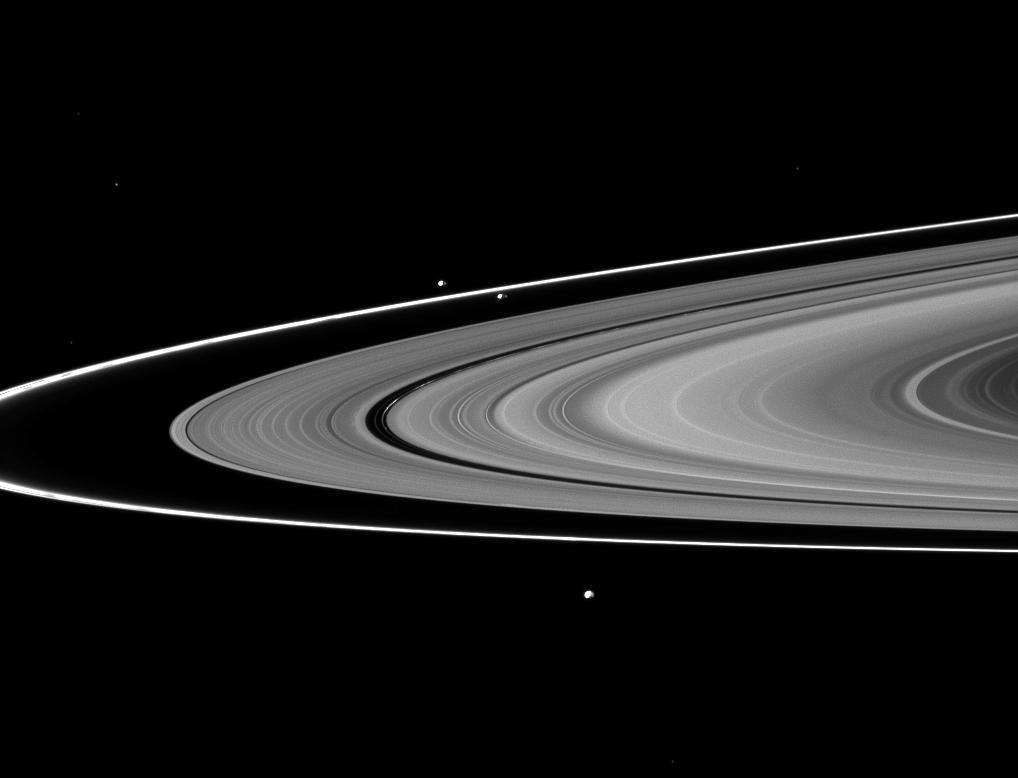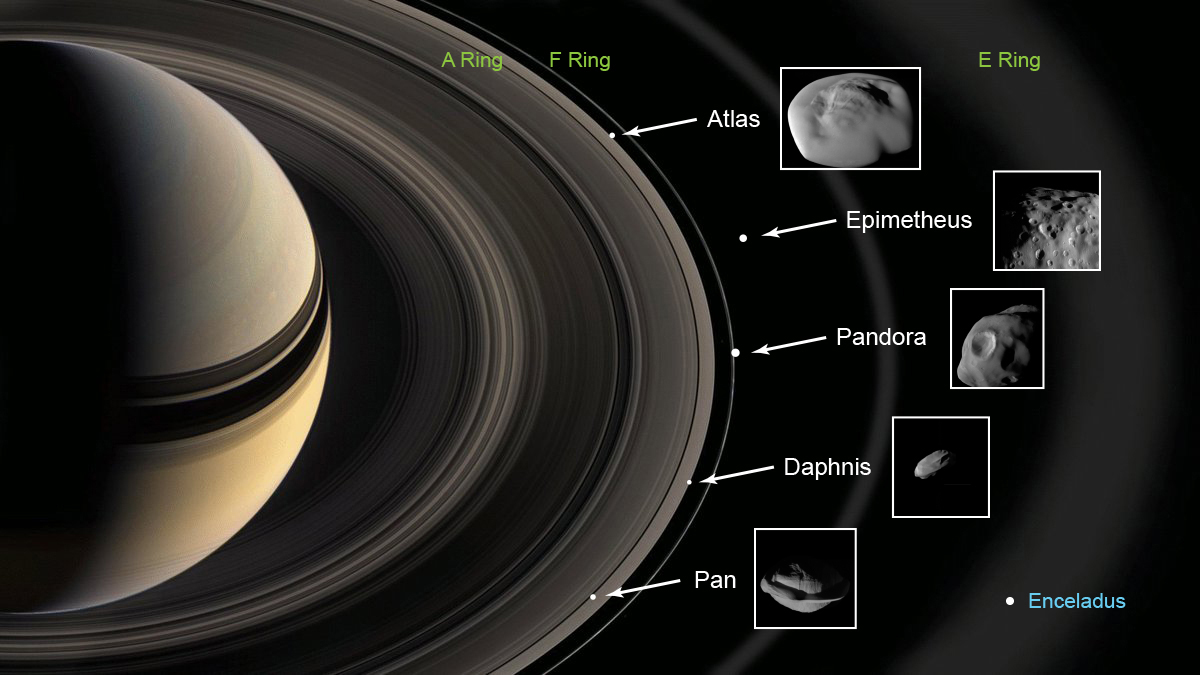Weirdly Colored Saturn Moons Linked to Ring Features, NASA's Cassini Revealed
The probe's death death dive helped shed light on the mystery.

The bizarre shapes and diverse colors seen in some of Saturn's moons may now be explained, with the help of data taken by NASA's Cassini spacecraft before it plunged to its doom.
These moons likely coalesced from the planet's rings and get their color from either ice volcanoes or a mysterious red material in the rings, according to a new study.
Saturn not only possesses extraordinary rings, but also more than 60 moons. A half-dozen or so of these moons appear linked with the giant planet's main rings, either lodged within these features or gravitationally interacting with them to sculpt their shapes and influence their composition.
Related: Cassini's 13 Greatest Discoveries During Its 13 Years at Saturn
The ring moons often possess bizarre features; for example, Pan and Atlas are shaped like flying saucers. Saturn's moons can also vary in color from adjacent rings, and astronomers have questioned why these differences appear.
The relationship between the planet's rings and these moons suggests that the rings' and moons' origins and continued existence are linked, researchers have said. Previous work suggested either that the moons coalesced from ring material or that the rings formed from the disintegration of a moon.
To shed light on the mysteries of these ring moons, scientists had NASA's Cassini probe perform five close flybys with five of these moons — Pan, Daphnis, Atlas, Pandora and Epimetheus — before the spacecraft ended its mission by diving into Saturn. Using data from six instruments onboard Cassini, the researchers analyzed the shape, composition, structure and environment of these moons.
Breaking space news, the latest updates on rocket launches, skywatching events and more!
"This mission was not supposed to happen," Bonnie Buratti, lead author on the new study and a planetary astronomer at NASA's Jet Propulsion Laboratory in Pasadena, California, told Space.com. "Cassini was only supposed to look at Saturn and its rings and its magnetosphere during its grand finale, but we noticed that it would come close to Saturn's ring moons, and we argued we wanted to look at them. So, our findings here are like a bow on top of the Cassini mission."
The scientists found that the appearance of these ring moons depended on their position with respect to the rings, with Pan the reddest and closest in of these moons and Epimetheus the bluest and farthest out. This suggested that the moons' appearance depended on two competing factors, the researchers said: contamination by a red material from the main rings, which could consist of a mix of iron and organic compounds, and showers of ice particles or water vapor from volcanic plumes originating on Saturn's moon Enceladus.
The researchers also found that these moons had low densities. This suggested that the natural satellites originated from ring material accreting onto dense cores, sometimes collecting onto the equators of these moons, which would help explain the flying saucer shapes of Pan and Atlas.
"The rings and these moons are really the same kind of object — the rings are made of small particles, and these moons are the biggest versions of these particles," Buratti said. "These moons continue to accumulate small particles, explaining the weird skirt-like features around their equators."
The scientists detailed their findings online March 28 in the journal Science.
- Photos: Saturn's Glorious Rings Up Close
- Cassini's Death Dive into Saturn Reveals Weird Ring 'Rain' & Other Surprises
- Saturn Moon Enceladus Blasts Rings with Geysers in Gorgeous Cassini Photo
Follow Charles Q. Choi on Twitter @cqchoi. Follow us on Twitter @Spacedotcom and on Facebook.

Charles Q. Choi is a contributing writer for Space.com and Live Science. He covers all things human origins and astronomy as well as physics, animals and general science topics. Charles has a Master of Arts degree from the University of Missouri-Columbia, School of Journalism and a Bachelor of Arts degree from the University of South Florida. Charles has visited every continent on Earth, drinking rancid yak butter tea in Lhasa, snorkeling with sea lions in the Galapagos and even climbing an iceberg in Antarctica. Visit him at http://www.sciwriter.us

